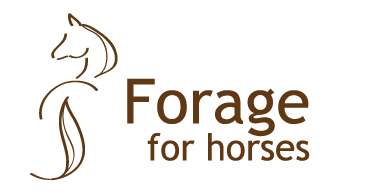Different feeds have small impact on pH in horses’ oral cavity

In this study the pH in horses’ oral cavity was examined during feeding with different forages. pH is a measure of acidity and the lower the pH the more acid is the environment. The forages used was frozen fresh matter (> 30% DM), silage (60% DM), haylage (40% DM) and hay (> 82% DM) and they were harvested the same day from the same ley. The fresh matter was taken directly from the field after cutting and frozen. The pH values of the forages were 6.44 for fresh matter, 5.83 for silage, 6.18 for haylage and 6.85 for hay. Four standardbred trotters were used in the study and pH was measured under the horses’ tongue with special indicator sticks for pH 6.5-10.0 from Merck.
Before the horses started eating the pH of the oral cavity was 8.7-9.0. Then the pH was measured after they had been eating for 20 min, 50 min, 1 hour and 20 min, 2 hours and 20 min, and 3 hours and 20 min. Table 1 show the mean values for pH in the oral cavity during eating. The oral cavity pH was significantly lower when the horses ate fresh matter and hay compared to when they ate silage and haylage. However, the difference between different horses was greater than between forages. Regardless of which forage they ate two of the horses had slightly higher oral cavity pH than the other two horses.
pH in the oral cavity was also measured in 40 standardbred trotters before and after eating concentrate. 38 of the horses were fed a mix of oats and pelleted concentrate and 2 of the horses were fed oats and apples. Before the horses started eating the oral cavity pH was between 8.5 and 9.0. The mean value of the pH in the oral cavity after feeding was 8.7 for the horses fed oats and pelleted concentrate. The two horses fed oats and apples had an oral cavity pH of 6.5 and
The results show that different feeds have very little impact on pH in the oral cavity of horses. That fresh matter and hay gave a slightly lower oral cavity pH than silage and haylage might be due to that they contain more sugar and when oral cavity bacteria ferments sugar they also produce acid which lowers pH. That there was such a small effect on oral cavity pH and the fast increase in pH after eating the apples indicates that horses’ saliva has a good buffering capacity. Horses are made for grazing several hours per day, chewing is the main stimuli for salivary secretion in horses and the oral cavity and stomach are probably adapted to a continuous abundant infusion of buffering saliva. Good buffering capacity and normal salivary flow are considered important for preventing dental caries. Therefore access to forage and possibility to eat during longer periods of time are important.
Sara Muhonen, AgrD
Reference:
Ellevik S 2006 Effekten av olika foderberedningar på pH i normala hästars munhåla. Examensarbete veterinärprogrammet, Faculty of Veterinary Medicine and Animal Science, SLU, ISSN 1652-8697. (In Swedish)

